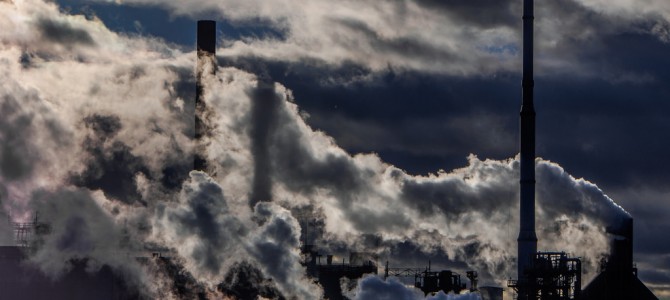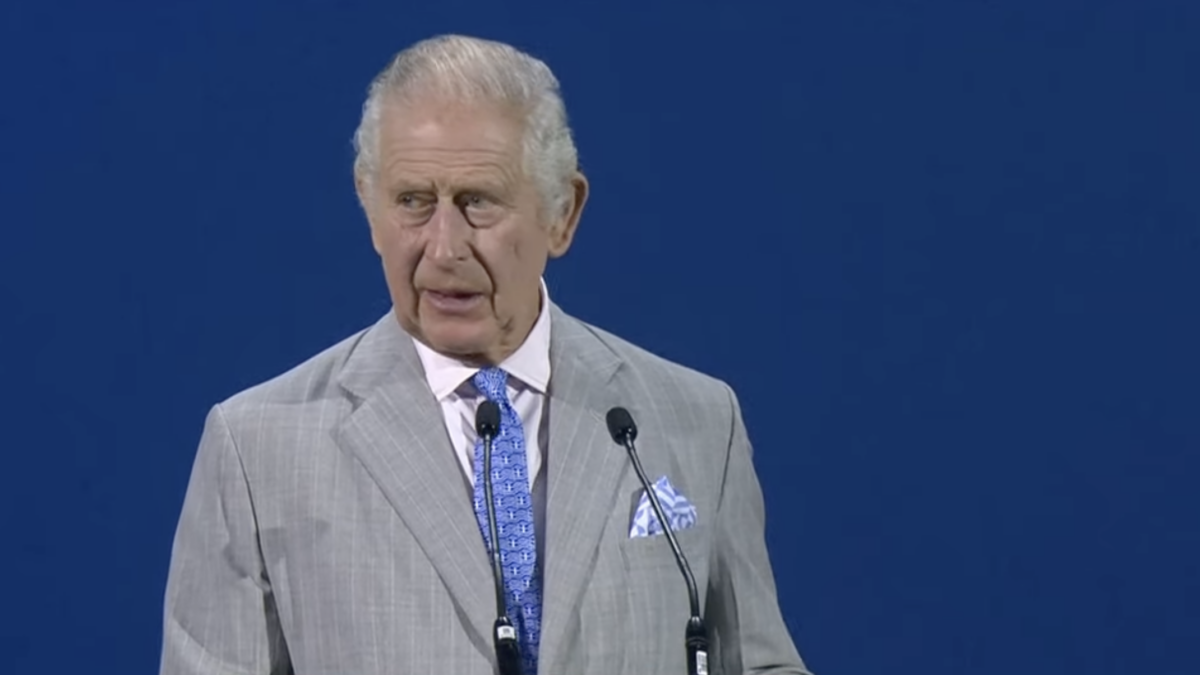
The Obama administration’s “Clean Power Plan,” the vast new scheme of regulations on power plants the EPA unveiled this Monday, is like every form of central planning that came before it. It is a monument to the faith that government edicts can overturn the laws of economics—and the laws of physics.
The plan is more than just a set of burdensome new regulations. It is a vision for a new national electrical power system heavily dependent on “renewable energy” sources that will supposedly prevent global warming. But this vision is deeply unscientific and physically impossible to achieve.
The plan relies on three big absurdities.
Wind and solar are not reliable power sources.
The Clean Power Plan is not just about reducing the amount of energy generated from coal in favor of, say, natural gas. (That’s something that has already been happening through a combination of new government regulations and market forces, especially the flood of cheap natural gas from fracking.) Nor is it about moving from fossil fuels to a proven alternative like nuclear power.
Instead, the big news about this plan is that it would impose a national-level mandate to generate 28% of our electrical power from solar panels and wind turbines, with about two-thirds of that coming from wind. The absurdity is that these don’t really count as reliable sources of power.
A conventional plant—natural gas, coal, or nuclear—basically works like the gas pedal on your car. It produces power on command, as and when you need it. Add more fuel, increase the speed of the motor, and you get more power. This allows utilities to reliably scale their output to follow demand, generating more power during peak times. Solar and wind, by contrast, produce power only when the sun shines or the wind blows, which doesn’t necessarily track with demand. Wind energy, for example, produces the most power during evenings in the Spring and Fall, which is when demand is at its lowest. And that certainly won’t do you any good on a sweltering August afternoon.
Being able to match supply with demand on the electrical grid is not optional. Bad things happen if that fails. To deal with this, utilities can adopt a regime of rolling blackouts during periods of peak demand—a common feature of Third World power systems, and a feature of the First World if environmentalists have their way. (As a demonstration project for this brave old world, British academics built a coffee maker that only works when the wind is blowing.) Or, since a developed economy cannot function on a capricious power supply, they have to match nearly every kilowatt of “renewable” power capacity with a conventional backup. For every wind farm, they have to have a conventional power plant on standby or running at the low end of its capacity, ready to make up the shortfall when the wind goes slack.
This runs smack into another one of the “building blocks” of the new EPA proposal, which is to require natural gas-fired power plants to increase their efficiency by running much closer to the peak of their capacity. So the EPA will demand that conventional plants run at 70% or more of their capacity—even as the switch to “renewable energy” requires that they run at 25% or 50% of capacity to provide backup for all the new windmills and solar panels.
This whole system is spectacularly inefficient. It means paying a lot of money for very expensive electrical generation capacity, and then being able to reliably use only a fraction of it—while you also pay to build and run a whole redundant conventional power system as a backup. It also means you don’t save that much in terms of carbon dioxide emissions, which is supposed to be the whole point, because you’ve got fossil fuel plants all fired up but only running at half-throttle or on “hot” standby.
That brings us to the other giant engineering failure of the EPA’s proposed power system.
A whole new “renewable” power system can’t be built.
The EPA wants to require a huge increase in wind and solar construction without heed for the cost of that construction, not just in dollars, but in energy. The basic scientific and engineering problem with building massive new solar plants and wind turbines is that the more of them you build, the less likely they are to produce more energy than you consume to build and maintain them. They become, not an addition to the nation’s power resources, but a drain on it.
That was the upshot of a report from two idealistic Google engineers who set out to determine how you could create a fully “renewable” power grid. They concluded that it was impossible and that a totally new, “disruptive” technology would be required to make any progress at reducing carbon dioxide in the atmosphere—which means this whole vision depends on a technology that does not exist yet, not even in theory.
A summary in The Register adds another consideration:
Even if one were to electrify all of transport, industry, heating and so on, so much renewable generation and balancing/storage equipment would be needed to power it that astronomical new requirements for steel, concrete, copper, glass, carbon fiber, neodymium, shipping and haulage, etc., etc. would appear. All these things are made using mammoth amounts of energy: far from achieving massive energy savings, which most plans for a renewables future rely on implicitly, we would wind up needing far more energy, which would mean even more vast renewables farms—and even more materials and energy to make and maintain them, and so on. The scale of the building would be like nothing ever attempted by the human race.
The EPA’s plan, for example, would require somewhere on the order of 500 gigawatts of wind-powered generating capacity. Building that four megawatts at a time—the capacity of the largest wind turbines currently made—would mean building 125,000 of these giant windmills across the country, along with hundreds of gigawatts of additional conventional plants to serve as a backup reserve for the wind farms.
We’d go bankrupt before we finished building that, which leads us to the final reason the EPA plan is delusional.
We already know the results.
I would be tempted to refer to the EPA’s plan as “utopian,” but “utopia” means “no place.” It refers to an imaginary scheme that has not yet been tried. Yet the new “renewable” power system has already been tried, so we know how it ends up working.
California, for example, has used “renewable” energy mandates to increase this sector to 25% of its electricity production. The result is that California now imports 21% of its energy from neighboring states. The conventional plants that can’t be built in California are being built in Arizona and Nevada and elsewhere.
As New England and the upper Midwest states have imposed cap-and-trade schemes or renewable energy mandates, electricity imports from Canada have doubled to about 1.6% of American electricity consumption. As new rules shut down many more coal-fired plants, that will probably double or triple again.
And then there’s the example of Germany, which has launched an unprecedented attempt to switch over to “green” power, even as it closes down its nuclear plants. The result has been a massive increase in energy costs that is leading some German manufacturers to shift production outside of Europe.
So we know what the result will be: not a “clean power” utopia, but less power that is more expensive, supplemented by importing electricity from our neighbors.
So why create a national electricity scheme that is impossible to build? Perhaps because its purpose is not to build but to tear down. If you come up with a plan that claims it will reduce existing sources of energy in favor of new sources of energy—and those new sources turn out to be speculative at best, and physically impossible at worst—then it’s fair to conclude that the real essence of the plan is simply to reduce existing sources of energy.
The purpose of doing it now is to lock us into it. This plan has been unveiled with a lot of talk about President Obama’s “legacy.” That legacy doesn’t include any legislation to reduce carbon dioxide emissions and supposedly reverse global warming. Instead, he’s doing it unilaterally, through executive action. And his hope is that once these rules are finalized, they will become permanent. As one wind industry shill exults, “A president cannot undo rules promulgated by previous administrations. It has been attempted. But they are rarely successful at doing that.”
For those who think industrialism is a scourge on the earth, the Clean Power Plan achieves what is really important. It may be an absurdity, but it makes sense if we ask what it accomplishes.
Follow Robert on Twitter.









